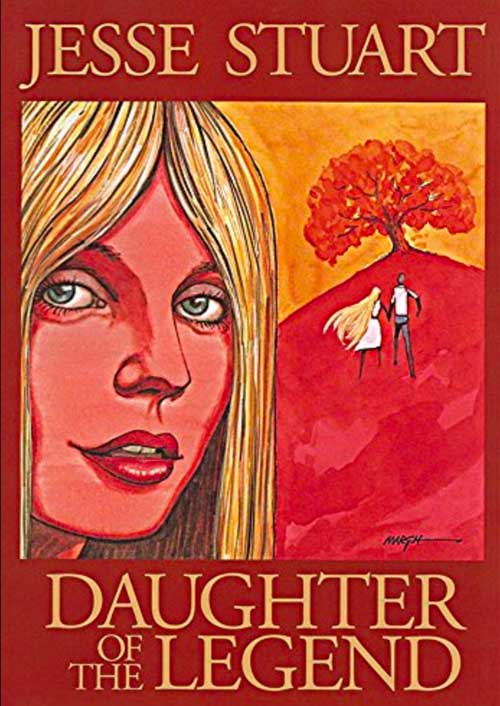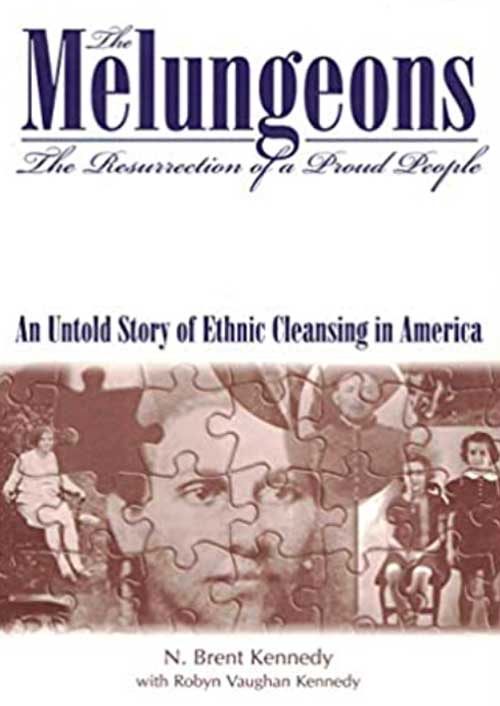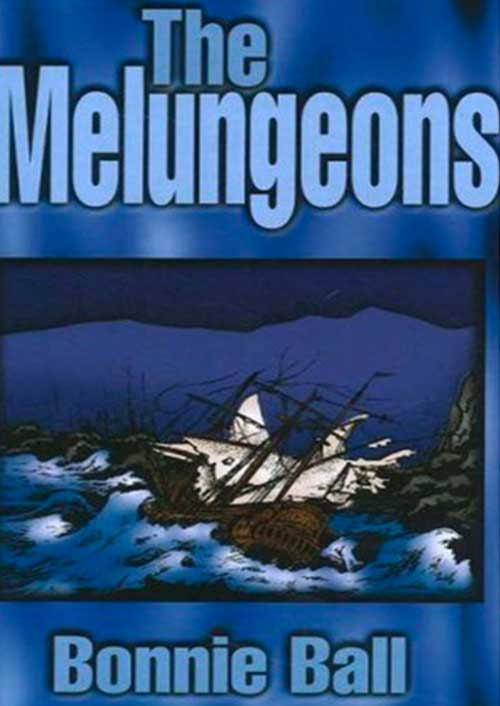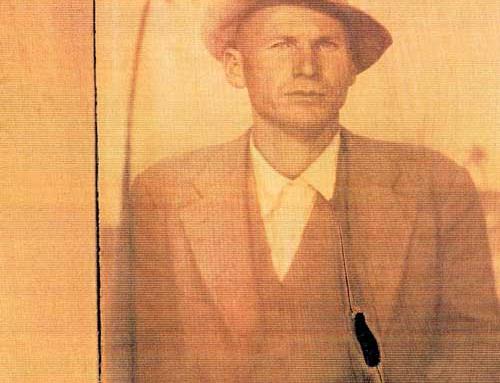Americans are fascinated with unsolved historical mysteries. Today, for example, many thousands are trying to find out more about the Melungeons.

Daughter of the Legend book cover.
The Melungeons are both a regional and a national mystery. Historically, they were mountain people, but they were dark-skinned and did not resemble their Appalachian neighbors of Anglo-Saxon, Scotch-Irish, or even German descent. They resembled Indians in some ways, but they had other physical characteristics that suggested a mixture of many races. Many had black hair, blue eyes, and Mediterranean features, but others, like Deutsia Huntoon, the fair heroine of Jesse Stuart’s novel Daughter of the Legend, were blond.
Who are the Melungeons? That’s a hotly debated topic among scholars, and there are numerous books in print now that offer widely conflicting explanations. Some argue that the Melungeons are descendants of shipwrecked Portuguese or Spanish sailors. At the opposite extreme, others say they are “tri-racial isolates,” a mixture of Indians, blacks, and whites.
Throughout these many historical and genealogical arguments, there are several major points of agreement:
- They are primarily settled in the Newman’s Ridge area of Hancock County, Tennessee and to a lesser extent on the high ridges of East Tennessee, Western Virginia, and Eastern Kentucky.
- They have several common surnames, including Collins, Gibson (or Gipson), Mullins, and Goins.
- They have lived, until very recently, in purposeful isolation from mainstream America.
In the late 1920s, Jesse Stuart was a student at Lincoln Memorial University in Harrogate, Tennessee where, according to his sister Glennis, “he met and fell in love with a beautiful Melungeon girl named Barnie Greene.” So when Stuart drafted Daughter of the Legend in 1945, he was actually reliving the excitement and cultural conflict of his undergraduate days.
The novel was first published in 1965. Limited to one printing, it was not considered to be one of Stuart’s best books. Time has proven the critics wrong.
Rather than writing an epilogue to the exciting story of a mysterious and forgotten people, Stuart’s novel actually created an interest in the Melungeons that has grown dramatically in the last three decades, thanks in large part to the pioneering research efforts of Brent Kennedy, author of The Melungeons: The Resurrection of a Proud People.
In response to growing national interest, Daughter of the Legend was re-issued by the Jesse Stuart Foundation in 1994 and again in 2020. Editor John Spurlock’s Preface, noted author Wilma Dykeman’s Introduction, Brent Kennedy’s Afterword, and powerful illustrations by local artist Jim Marsh combined to make Daughter of the Legend a book for our time.
Today, the origin of the Melungeons is a source of ongoing intellectual controversy between historians and genealogists. The Internet includes at least a dozen Web pages devoted to Melungeon study. New books and articles appear regularly as university scholars become more involved in studying the Melungeons.
Less scholarly than Kennedy’s book, but very readable, is Bonnie Ball’s The Melungeons, first published in 1962 and revised and re-issued in 1992. Ball’s book derives from her research and personal knowledge.
More recently, Mercer University Press published a strong addition to Melungeon studies. Wayne Winkler’s Walking Toward the Sunset: The Melungeons of Appalachia is an excellent overview of the Melungeons, an Appalachian sub-culture that remains an American mystery. Today, the JSF Bookstore and Appalachian Gift Shop, located at 4440 13th Street in Ashland, contains eight different books that focus on the Melungeons (use this link to shop our related books on Amazon). For more information, call 606-326-1667 or send us a message on our Contact page and tell us of your interest.
By James M. Gifford
JSF CEO & Senior Editor
By James M. Gifford
JSF CEO & Senior Editor
Americans are fascinated with unsolved historical mysteries. Today, for example, many thousands are trying to find out more about the Melungeons.

Daughter of the Legend book cover.
The Melungeons are both a regional and a national mystery. Historically, they were mountain people, but they were dark-skinned and did not resemble their Appalachian neighbors of Anglo-Saxon, Scotch-Irish, or even German descent. They resembled Indians in some ways, but they had other physical characteristics that suggested a mixture of many races. Many had black hair, blue eyes, and Mediterranean features, but others, like Deutsia Huntoon, the fair heroine of Jesse Stuart’s novel Daughter of the Legend, were blond.
Who are the Melungeons? That’s a hotly debated topic among scholars, and there are numerous books in print now that offer widely conflicting explanations. Some argue that the Melungeons are descendants of shipwrecked Portuguese or Spanish sailors. At the opposite extreme, others say they are “tri-racial isolates,” a mixture of Indians, blacks, and whites.
Throughout these many historical and genealogical arguments, there are several major points of agreement:
- They are primarily settled in the Newman’s Ridge area of Hancock County, Tennessee and to a lesser extent on the high ridges of East Tennessee, Western Virginia, and Eastern Kentucky.
- They have several common surnames, including Collins, Gibson (or Gipson), Mullins, and Goins.
- They have lived, until very recently, in purposeful isolation from mainstream America.
In the late 1920s, Jesse Stuart was a student at Lincoln Memorial University in Harrogate, Tennessee where, according to his sister Glennis, “he met and fell in love with a beautiful Melungeon girl named Barnie Greene.” So when Stuart drafted Daughter of the Legend in 1945, he was actually reliving the excitement and cultural conflict of his undergraduate days.
The novel was first published in 1965. Limited to one printing, it was not considered to be one of Stuart’s best books. Time has proven the critics wrong.
Rather than writing an epilogue to the exciting story of a mysterious and forgotten people, Stuart’s novel actually created an interest in the Melungeons that has grown dramatically in the last three decades, thanks in large part to the pioneering research efforts of Brent Kennedy, author of The Melungeons: The Resurrection of a Proud People.
In response to growing national interest, Daughter of the Legend was re-issued by the Jesse Stuart Foundation in 1994 and again in 2020. Editor John Spurlock’s Preface, noted author Wilma Dykeman’s Introduction, Brent Kennedy’s Afterword, and powerful illustrations by local artist Jim Marsh combined to make Daughter of the Legend a book for our time.
Today, the origin of the Melungeons is a source of ongoing intellectual controversy between historians and genealogists. The Internet includes at least a dozen Web pages devoted to Melungeon study. New books and articles appear regularly as university scholars become more involved in studying the Melungeons.
Less scholarly than Kennedy’s book, but very readable, is Bonnie Ball’s The Melungeons, first published in 1962 and revised and re-issued in 1992. Ball’s book derives from her research and personal knowledge.
More recently, Mercer University Press published a strong addition to Melungeon studies. Wayne Winkler’s Walking Toward the Sunset: The Melungeons of Appalachia is an excellent overview of the Melungeons, an Appalachian sub-culture that remains an American mystery. Today, the JSF Bookstore and Appalachian Gift Shop, located at 4440 13th Street in Ashland, contains eight different books that focus on the Melungeons (use this link to shop our related books on Amazon). For more information, call 606-326-1667 or send us a message on our Contact page and tell us of your interest.





